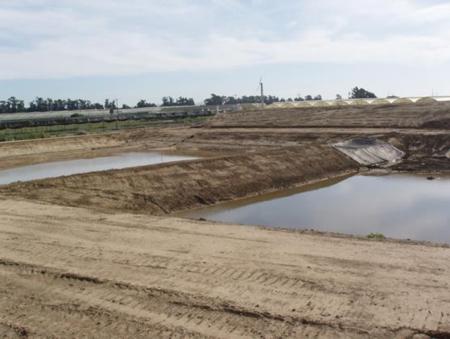Summer 2013: Water quality management plans
Regional Report Ventura and Santa Barbara Counties by Julie Newman
Growers who are enrolled in the Central Coast regional water board’s conditional waiver program must have a farm water quality management plan. Plan requirements include a site map identifying runoff discharge locations, a description of the typical runoff, types of chemicals applied, and a description and time schedule of management practices to mitigate runoff and groundwater leaching. A complete list of requirements is described on page 20, item #44 of the waiver, which is available on the regional water board website (http://www.waterboards.ca.gov/centralcoast/water_issues/programs/ag_waivers/).
The Los Angeles regional water board’s conditional waiver program also requires a “Water Quality Management Plan” (WQMP). Growers who belong to a cooperative waiver group are not required to develop an individual plan but instead provide information that has been used to compile the group WQMP. For example, in Ventura County, growers completed a management practices survey which the Ventura County Agricultural Irrigated Lands Group (VCAILG) used to compile the group WQMP. The survey is available at http://www.farmbureauvc.com/pdf_forms/MgtPractSurvey.pdf.
Even if your nursery business is conducted in an area where water quality management plans are strictly voluntary, you may still want to consider developing one because the process will help you determine if any problems exist that contribute to water pollution. Addressing these problems helps to comply with existing water quality regulations and may prepare you for more stringent requirements down the road. Moreover, a water quality management plan may be used to complete documents required by regulatory agencies and demonstrates your good stewardship.
Last fall, UCNFA presented a workshop on developing a farm water quality management plan. The PowerPoint of that presentation is available on my website at http://ceventura.ucdavis.edu/files/152724.pdf. Here is a summary of information presented at the workshop.
Know what’s in your runoff. Before you start developing a water quality management plan you must be familiar with the potential risk that runoff from your operation poses if it moves off site and enters a water body. It’s important to be aware of any impaired water bodies that may be impacted by discharges from your operation. Inventory agrochemicals used in the nursery, especially those likely to be present in runoff. Know the basic properties of the pesticides that are used and how they potentially impact local water. Monitor runoff flow and basic nutrient concentrations in discharges. It is also recommended that you test for other contaminants according to the products used, such as specific pesticides that you suspect may be present in runoff. Compare results of your water analyses against local, state, and federal water quality standards and regulations for potential noncompliance issues. Establish and maintain water quality runoff records and use them for planning and evaluating future improvements.
Develop your goals. The first step in developing a water quality management plan is to think about your goals. A management goal is an economically achievable technology or process for effectively limiting runoff and groundwater leaching. Management goals are general; for example, “Establish an IPM program to reduce pesticide use.”
Compile a list of management practices. The next step is to develop a list of practices that could potentially mitigate runoff and leaching. A management practice is a specific practice for accomplishing the management goal. For example, “Base decisions to use pesticides and other control options on monitoring information.” Management practices are usually called “best management practices (BMPs), but the “best” practices vary with on-site specifications.
Lists of BMPs are available that can be employed to protect water quality. Check with your Cooperative Extension office, local USDA Natural Resources Conservation Service (NRCS), or Resource Conservation District (RCD). A checklist of practices specific for ornamental production is available on my website at http://ceventura.ucdavis.edu/files/153137.pdf and in Greenhouse and Nursery Management Practices to Protect Water Quality, available at http://anrcatalog.ucdavis.edu/Details.aspx?itemNo=3508. These checklists can be used as a template for your plan.
Conduct a water quality audit. A water quality audit or self-assessment is a way to evaluate current management practices that may impact water quality. It can be conducted by going through your compiled list of BMPs and checking off the ones that you have already implemented. This exercise will increase your awareness of the variety of practices to mitigate runoff and leaching and provide a convenient way to identify areas that may require improvements.

Develop and implement the plan. After you complete the audit, the next step is to go back through the list and highlight the BMPs applicable to your operation that you have not implemented. Select BMPs from those highlighted which would help you meet your plan objectives and help comply with regulations. Which BMPs you select depends on economics and specific conditions unique to your operation. The easiest and least costly BMPs to implement are often practices that reduce the quantity of runoff and pollutant loads. However, you may still need to adopt practices and technologies that treat and contain runoff, such as the use of impoundments (fig. 1) and the use of other practices described in this newsletter such as vegetated buffers, slow sand filtration and PAM.
Once you determine which BMPs you plan to implement, the final step is to develop a schedule for implementation. This may require a financial analysis to determine when any needed capital would be available for construction, materials, or labor. If you require a loan or other financial assistance, funding for BMP implementation may be available from various sources such as the NRCS.
Once your plan is completed, it’s important to keep it updated. Record all management practices that you implement and the date of implementation. Evaluate the effectiveness of the implemented BMPs and make adjustments accordingly.
Julie P Newman
Floriculture and Nursery Crops Advisor
UC Cooperative Extension Ventura County
669 County Square Drive, #100
Ventura, CA 93003-5401
(805) 645-1459 phone
(805) 645-1474 fax
jpnewman@ucdavis.edu
http://ceventura.ucdavis.edu












